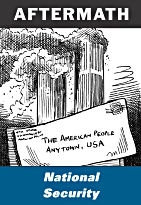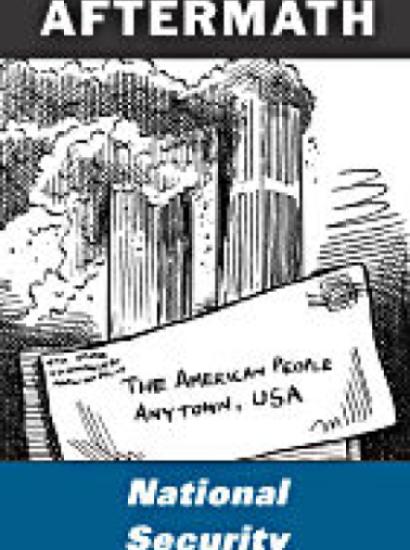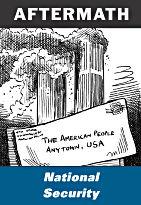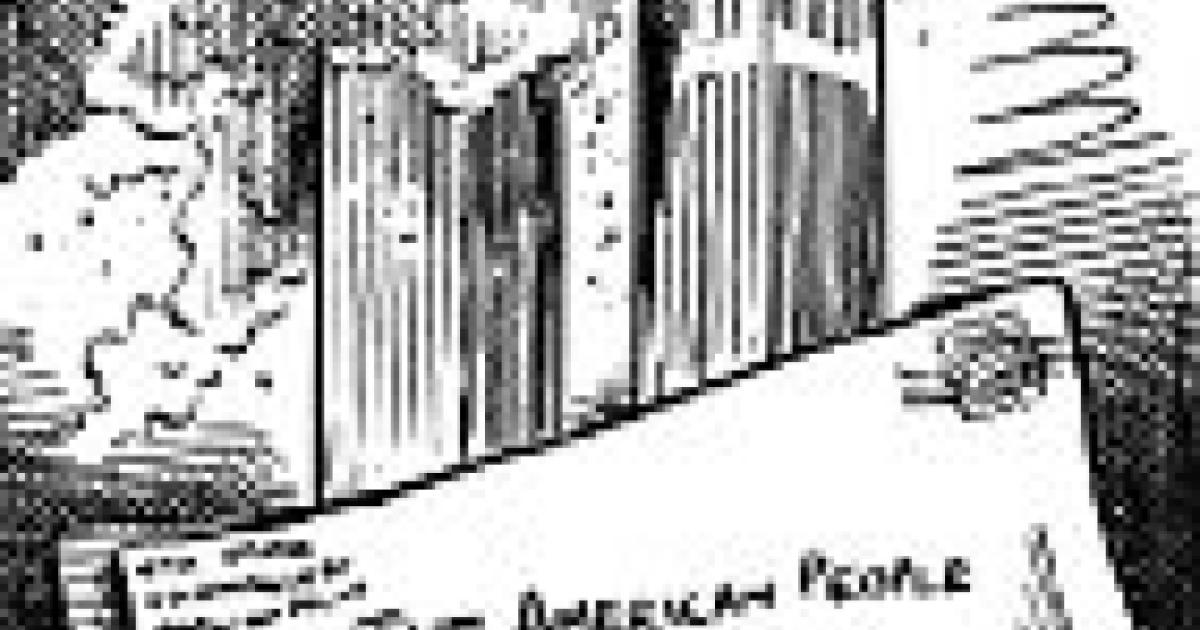- Security & Defense
- US Defense
- Terrorism
As should be clear to anyone who followed the military

operations in Afghanistan to eliminate the Taliban regime, U.S. military forces have changed radically in the past decade. They will likely change even more—and at a faster pace—in the next few years.
U.S. forces will rely more on long-range, precision-guided munitions. Ships, aircraft, and land forces will all look different and will be designed to operate in smaller, more mobile units. They will make greater use of intelligence to get a continually updated view of the battlefield and will make greater use of offensive "information warfare" to cloud an adversary’s view. Yet, paradoxically, even as the U.S. military comes to depend more on advanced technology, it will also find more uses for special operations forces. On the ground, these units will be used to "paint" targets to guide weapons to their final destination and they’ll work with local resistance forces. In the air and at sea, special forces will be used in strikes to minimize the appearance—the "footprint," to use military jargon—of U.S. intervention.
These changes were being formulated within the Department of Defense (DOD) during the Clinton administration and were being accelerated under the George W. Bush administration. Now, after some early setbacks, these changes will be accelerated even faster as a result of the September 11 terrorist attacks.
To understand how these changes have evolved, one needs to understand the new threats the United States faces and recent developments in technology. One also needs to understand the political factors that have affected the pace of military transformation because they remain significant.
New Threats
Current U.S. military forces were designed for a world that now hardly exists. The army was organized mainly around armored divisions designed to repel a Soviet invasion of West Germany. The navy was designed to strike Soviet nuclear submarines in the Barents Sea and keep maritime shipping lanes open to permit the resupply of NATO. The air force was designed mainly around the nuclear deterrence mission.
Now, of course, the Soviet Union is gone. The problem has been to find a new metric for planning U.S. military forces. After the fall of the Berlin Wall, the administration of George H.W. Bush began planning for a military structure that was smaller overall—the so-called base force—reflecting a diminished threat. U.S. forces were sized to fight two simultaneous "major regional conflicts," reflecting the recent experience of the United States in Desert Storm.
When the Clinton administration entered office, it carried out its own "bottom-up review" to achieve a military that was smaller still. But the real problem with this approach—which was also driven by the public’s expectation of a peace dividend—was that the new threat was not so much smaller as it was different.
It has been said occasionally that the main lesson Desert Storm taught America’s potential adversaries was—don’t try to fight a war like Desert Storm. The coalition forces that defeated Iraq in 1991 were mainly American and demonstrated that the United States was so far advanced that no country could win a head-to-head conventional war against it. (People often forget that Iraq had the world’s third-largest land army in 1991 and was widely viewed as a formidable opponent.) To stand any chance against the United States, new threats had to use "asymmetric" tactics to hit us where we are weak. In addition, armies, terrorists, and international criminal networks could threaten the U.S. homeland directly, not just U.S. interests abroad. To complicate planning even more, all these threats have access to various kinds of weapons of mass destruction—chemical, biological, and even nuclear. These weapons could allow even a poor country—or organizations other than foreign governments—to present a credible threat against the United States.
Precision on the Battlefield
At the same time the threat was changing, so too was military technology. Better battlefield information has been the Holy Grail of military thinkers for centuries—the proverbial need to cut through the "fog of war" and hold the high ground. Techies have often promised to "make the seas transparent" or provide "real-time, synoptic coverage." Reality has rarely lived up to these promises.
Now we may be seeing something different, though. U.S. forces have a clear technological advantage—over all potential adversaries—that is unlikely to change soon. No other country has comparable capabilities in night vision goggles, airborne synthetic aperture radar, space-based surveillance, and so on. Even more significant, no other country has been able to fuse all these systems into an integrated network, where information can be exchanged quickly and easily. It may be impossible to eliminate all uncertainty from combat, but the advantage U.S. forces currently enjoy is unmistakable. And, in the land of the blind, the one-eyed man is king.
Similarly, techies have promised "one shot, one kill" for many years. Recall the Norden bombsight from World War II, which was supposedly accurate enough to place a bomb in a pickle barrel from 20,000 feet. During most of the twentieth century, though, these weapons suffered from one of two deficiencies: Either they were not as accurate as claimed under operational conditions (the Norden bombsight would have been lucky to hit a pickle factory, never mind a barrel), or they were so expensive that commanders could not use them en masse (a Tomahawk cruise missile has a better than 90 percent chance of hitting its target, but each missile costs just over $1 million).
|
"What Washington did not take into account when it cut the military budget in the aftermath of the Cold War was that the new threat we faced was not so much smaller as it was different." |
Now we have weapons that are highly accurate and affordable. For example, last year DOD bought 600 Joint Direct Attack Munition (JADM) kits for $12 million. A JADM kit bolts onto an existing 2,000-pound bomb and for a total cost of about $21,000 turns a bomb bought during the Korean War into a smart weapon. At least now it costs the enemy more to build targets than it costs us to destroy them.
These technologies are turning over many traditional notions about how to wage war. Much of this new thinking can be traced to the Pentagon’s Office of Net Assessment and its director, Andrew Marshall. Although little known to the general public, the office has often been much more influential than its obscure title suggests. It is an in-house think tank for DOD charged with looking 10 or 20 years into the future, sizing up the threats the United States will face, and analyzing how we will match them.
In the early 1990s, Marshall began to speak about a "revolution in military affairs" (RMA). This revolution was driven mainly by the great changes that were under way in information technology. As a result of these changes, military forces would be able to have a better picture of the adversary and would be able to strike at him with precision weapons from great distance. The military would also need to become more mobile because large, stationary forces would be too vulnerable.
Over the course of three decades, many promising majors, lieutenant commanders, and GS-13 civilians have done a tour through the Office of Net Assessment. These officers are now generals, admirals, and members of the Pentagon’s Senior Executive Service and have considerable influence in drafting war plans and designing new weapons programs.
|
"U.S. forces have a clear technological advantage—over all potential adversaries—and that is unlikely to change soon." |
At the operational level as well, the services have been developing new thinking. For example, the navy is organizing much of its force structure around a concept called network-centric warfare (NCW). Under NCW naval forces fight as small, semiautonomous units, rather than as a centrally controlled fleet with a rigid, preset command structure. The army and air force are developing similar thinking. This kind of force is necessary when our opponents are apt to threaten us in the form of a global network of cells, such as the one Al Qaeda used to carry out the September 11 attacks.
Finally, beginning in the late 1990s military experts began to appreciate the need for "homeland defense." The new threats had the capability of striking the United States directly. For most of the twentieth century, the U.S. military devoted most of its attention to planning for wars abroad. With the new threats, there is greater need for monitoring the nation’s borders, defending its airspace, defending against missile attack, and coordinating with local authorities to defeat forces that successfully infiltrate U.S. territory.
The Politics of Defense Transformation
The main disagreement over defense transformation has not been "whether" but "how fast." Much of the thinking behind RMA and NCW was developed during the Clinton administration, as were many precision-strike weapons and the communications systems required to carry them out. Indeed, all of the advanced weapons used in Afghanistan were planned and developed under the Clinton administration.
The most significant decision on military transformation the Clinton administration made was to go slow. This was partly because its DOD appointees (in particular, Defense Secretary William Cohen) believed rapid change was too risky. It also reflected the Clinton administration’s reluctance to increase defense spending, especially given the additional strain put on the defense budget by prolonged deployments in the Balkans and over Iraq.
The Pentagon is like a supertanker: It is hard to make changes in any organization the size of DOD, and it must operate under constraints other large organizations do not face. Interest groups in Congress protect pet programs. The military culture is designed to promote compliance with accepted doctrine—not argue for change. And, like all government agencies, DOD cannot make major spending decisions any faster than the annual budget cycle permits.
In DOD, it is hard to accomplish change without taking radical action. George W. Bush campaigned on a platform of speeding up this change. Bush said he was willing to shut down the production of some current weapons, close bases, and phase out some existing forces to free up money for newer, more advanced systems. After Bush took office, the administration’s early defense planning documents reflected this plan. These documents also anticipated that the new areas of concern would be in the Pacific and Southwest Asia regions and—most of all—protection of the American homeland.
Despite Bush’s best intentions, however, several factors derailed this plan. First, the contested 2000 election chopped the presidential transition period in half. The delay in beginning the transition meant that, as late as six months into his first year, Bush had only two of his appointees in place at DOD: Secretary Donald Rumsfeld and Deputy Secretary Paul Wolfowitz. Second, Bush decided to focus initially on the domestic economy. He deferred defense transformation and used his political capital during his first months in office to push for a tax cut to revive the stalling economy. Third, Bush ran into special interest politics. Rumsfeld floated proposals for minor steps in defense transformation, like retiring outdated B-1B bombers or curtailing production of the Crusader artillery system. Legislators in the states where the weapons were based or manufactured objected. Bigger proposals, such as shutting down the production of nuclear aircraft carriers to free funds for larger numbers of smaller warships, were strangled in the cradle before they could be formally proposed.
|
"For most of the twentieth century, the U.S. military devoted most of its attention to planning for wars abroad. With the new terrorist threat, there is greater need for monitoring the nation’s borders, defending its airspace, defending against missile attack, and coordinating efforts to defeat forces that successfully infiltrate U.S. territory." |
By the summer of 2000 experts were debating whether military transformation was dead. All this changed after September 11. Rumsfeld gained stature—and clout—by his leadership of the military operation against the Taliban. Wartime has the effect of forcing consensus on defense decisions, especially when the war has broad popular support. Congressional leaders made a deliberate decision to go along with the administration on most defense issues.
Also, the new form of warfare seemed to work in Afghanistan. It is easy to forget now, but many naysayers were warning that U.S. forces would suffer the same fate in Afghanistan as the British in the 1800s and the Soviets in the 1980s. But precision bombing, supported by special forces, proved effective. Local forces opposing the Taliban were left to mop up. (Relying on local forces, however, also reduced U.S. leverage over the final political outcome in Afghanistan and permitted, as of this writing, the escape of both Mullah Omar and Osama bin Laden.)
September 11 also made clear the need for more effective homeland defense. The idea for an Office of Homeland Security had been kicked around for years; Bush announced he would create it just weeks after the attack. DOD also created a new military organization—the Northern Command—that would be responsible for combat operations within the United States.
Finally, once most people acknowledged that the United States was in a recession and at war, much of the pressure for limiting government spending disappeared. Previously the public debate was dominated by "preserving the budget surplus" and "Social Security lock boxes." Whatever the merits of deficit spending, this change made it possible to fund programs for defense transformation.
New Requirements for Cooperation and Information
One topic that is just beginning to be addressed in defense transformation, however, is the new relationships that are required among the military, civilian government agencies, and the private sector. The most important forms of cooperation are information sharing and defense of information systems.
Traditionally, the main user of military intelligence has been the military itself. This will need to change as the country prepares for homeland defense. Now agencies outside the military also require current information on foreign threats and signs of imminent attack. For example, countering biological weapons threats could require alerting local police, emergency response and safety organizations, and public health agencies. These organizations may need information on the nature of an anticipated attack, the type of agent that might be used, and the timing of the attack. All this information would likely be derived either from intelligence sources or from foreign police and intelligence services.
Coordinating a response to such an attack will require us to rethink how we use classified intelligence. The armed services will need to make greater use of open-source, unclassified information and declassify more of the information that is currently classified. At the same time, DOD must provide security clearances to a larger number and variety of people, such as local police and state officials.
Other new threats present additional challenges. One example is the possibility of attack on the nation’s information infrastructure—communications systems, computers, databases, and hardware. The most likely early targets for many of these attacks would be industry, not the government. That is another way of saying that industry will be the first to learn of such an attack. Government and industry need to improve the procedures for distinguishing between mere hackers or cyber criminals and more serious attacks from foreign terrorist or military organizations.
Homeland defense also raises questions about the role of the military, the role of law enforcement, and the role of the court system. For example, military forces are prohibited from carrying out law enforcement functions; this could constrain the kinds of operations the Northern Command could carry out if we do not know whether, say, terrorists are homegrown or foreign-based. Similarly, the controversy over military tribunals and the treatment of detainees (or prisoners of war, depending on your point of view) is just a hint of the issues that lie ahead.
What Can Be Done
After the attacks on New York City and Washington, D.C., many Americans wondered what they could do to support the war effort. The situation is very different from that of World War II, when men and women volunteered in large numbers for military service. Today’s military forces are fundamentally different. They are made up of relatively small numbers of professionals who chose military service as a career. The armed forces do not require—nor, for that matter, could they absorb—hundreds of thousands of draftees or short-term volunteers.
The good news is that the changing nature of war also creates a new opportunity for many Americans to play a role that is just as important—coordinating efforts for homeland security and sharing information for defense both at home and abroad. An effective national security policy will require U.S. citizens to become more involved in defense and national security. The new threat and the new ways of waging war thus offer a chance for average Americans to engage in the protection of their country more than they ever have before.
















